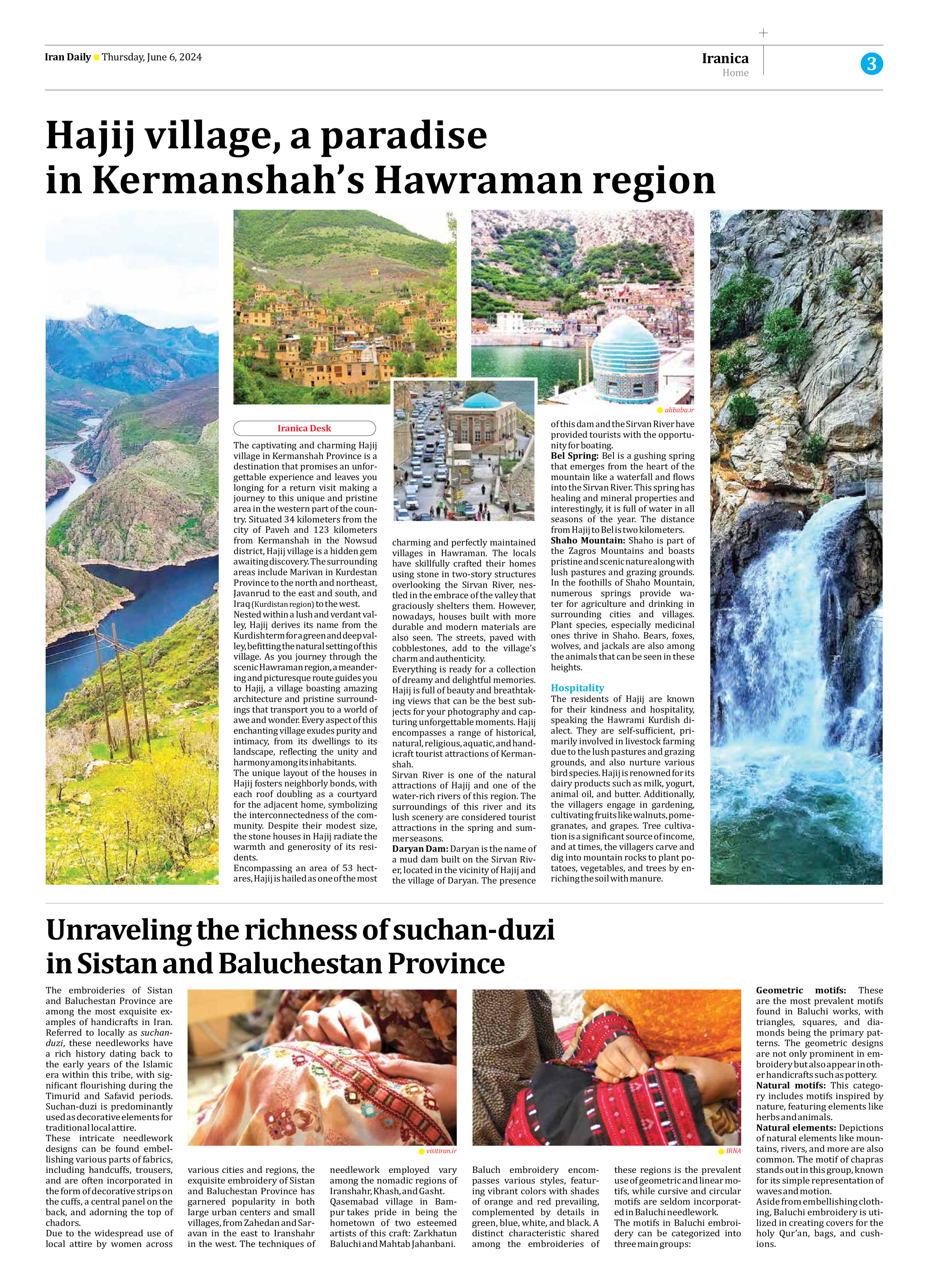
Hajij village, a paradise in Kermanshah’s Hawraman region
The captivating and charming Hajij village in Kermanshah Province is a destination that promises an unforgettable experience and leaves you longing for a return visit making a journey to this unique and pristine area in the western part of the country. Situated 34 kilometers from the city of Paveh and 123 kilometers from Kermanshah in the Nowsud district, Hajij village is a hidden gem awaiting discovery. The surrounding areas include Marivan in Kurdestan Province to the north and northeast, Javanrud to the east and south, and Iraq (Kurdistan region) to the west.
Nested within a lush and verdant valley, Hajij derives its name from the Kurdish term for a green and deep valley, befitting the natural setting of this village. As you journey through the scenic Hawraman region, a meandering and picturesque route guides you to Hajij, a village boasting amazing architecture and pristine surroundings that transport you to a world of awe and wonder. Every aspect of this enchanting village exudes purity and intimacy, from its dwellings to its landscape, reflecting the unity and harmony among its inhabitants.
The unique layout of the houses in Hajij fosters neighborly bonds, with each roof doubling as a courtyard for the adjacent home, symbolizing the interconnectedness of the community. Despite their modest size, the stone houses in Hajij radiate the warmth and generosity of its residents.
Encompassing an area of 53 hectares, Hajij is hailed as one of the most charming and perfectly maintained villages in Hawraman. The locals have skillfully crafted their homes using stone in two-story structures overlooking the Sirvan River, nestled in the embrace of the valley that graciously shelters them. However, nowadays, houses built with more durable and modern materials are also seen. The streets, paved with cobblestones, add to the village’s charm and authenticity.
Everything is ready for a collection of dreamy and delightful memories. Hajij is full of beauty and breathtaking views that can be the best subjects for your photography and capturing unforgettable moments. Hajij encompasses a range of historical, natural, religious, aquatic, and handicraft tourist attractions of Kermanshah.
Sirvan River is one of the natural attractions of Hajij and one of the water-rich rivers of this region. The surroundings of this river and its lush scenery are considered tourist attractions in the spring and summer seasons.
Daryan Dam: Daryan is the name of a mud dam built on the Sirvan River, located in the vicinity of Hajij and the village of Daryan. The presence of this dam and the Sirvan River have provided tourists with the opportunity for boating.
Bel Spring: Bel is a gushing spring that emerges from the heart of the mountain like a waterfall and flows into the Sirvan River. This spring has healing and mineral properties and interestingly, it is full of water in all seasons of the year. The distance from Hajij to Bel is two kilometers.
Shaho Mountain: Shaho is part of the Zagros Mountains and boasts pristine and scenic nature along with lush pastures and grazing grounds. In the foothills of Shaho Mountain, numerous springs provide water for agriculture and drinking in surrounding cities and villages. Plant species, especially medicinal ones thrive in Shaho. Bears, foxes, wolves, and jackals are also among the animals that can be seen in these heights.
Hospitality
The residents of Hajij are known for their kindness and hospitality, speaking the Hawrami Kurdish dialect. They are self-sufficient, primarily involved in livestock farming due to the lush pastures and grazing grounds, and also nurture various bird species. Hajij is renowned for its dairy products such as milk, yogurt, animal oil, and butter. Additionally, the villagers engage in gardening, cultivating fruits like walnuts, pomegranates, and grapes. Tree cultivation is a significant source of income, and at times, the villagers carve and dig into mountain rocks to plant potatoes, vegetables, and trees by enriching the soil with manure.







